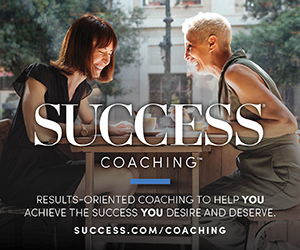Amber Slone was on a mission. It was early May, a couple of months into the COVID-19 pandemic, and her coworkers had been working from home for 10 weeks. They were bored. She was bored. And the last thing anyone wanted was another Zoom call. Nevertheless, she wanted to engage her colleagues. So the 33-year-old found herself driving around Dallas, darting from one coworker’s home to the next with dozens of soda bottles and ice cream pints in tow.
It took Slone three days, but she delivered all of her colleagues their own ingredients and guides for making an ice cream float. Under normal circumstances, this mission would have made Slone a strong contender for “Employee of the Year” at her software company, VMware. But for her, it’s just another day on the job.
“My title says ‘happiness director,’ but really I’m a people connector,” she says. “However I can make people love their work, that’s what I do.”
Slone is just one of a growing number of people whose job titles literally include the word “happiness.” Whether they are directors of happiness or chief happiness officers, their biggest priority is making people look forward to work every single day—regardless of their industry.
Jobs with “happiness” in the title are a relatively new development. They’re most common in startups or the tech world, and they’re sometimes part of the Human Resources department. But according to Slone’s colleague Lisa Berg, “happiness” jobs have little to no overlap with HR.
Berg is a happiness director at VMware in Chicago, and she sees herself as a resource for her coworkers.
“I’m always asking, ‘What burden are you experiencing and how can I help?’” she says. “If people are upset, it’s important to let them know they can be upset. It’s my job to understand why, so I can try to fix it.”
Her first week on the job, Berg saw a coworker storm out of the office, clearly upset. Berg didn’t know the coworker, and was still settling into her own role. But she still followed him out of the office to ask him if he was okay.
“He explained he was having an incredibly hard time, and asked if I [had] five minutes,” Berg says. “I said, ‘Yes! I have all the time you need!’”
Over the next several days, she and the coworker continued to talk regularly. She checked in with all of her other colleagues, too. Berg and the other happiness practitioners interviewed for this story talked about how crucial it is to simply be there for the people in their offices. That can impact more than the office; it can boost the company’s bottom line via employee retention and performance.
“We have people that could work for Google, Twitter, Facebook, wherever,” says Slone’s supervisor Jenn Donahue. “But they stayed here, and I honestly think she’s the reason.”
* * *
Happiness practitioners come from all walks of life. Slone came from sales. Berg came from the nonprofit world. Lauren Johnson worked in hospitality before her happiness director role with the Denver company JLL, and she echoes Berg’s idea that providing happiness means being a resource.
“A lot of what I do is finding answers for people so their days can be a little easier,” she says. “Sometimes that means preempting the questions and concerns before they come.” When her company moved locations, Johnson helped the brass design an office that gave each employee ample space.
“We work in the details,” she says. “It’s just the little things.”
Slone agrees: “It’s not always about bringing everyone ice cream floats or planning that one appreciation event that knocks everyone’s socks off,” she says. “Sometimes it’s just about remembering that someone’s family is going through a rough time, or knowing that they have a big sales meeting coming up and making sure they know they’re going to crush it.”
At the Florida-based company Presence, Chief Happiness Officer Holly Kickliter spends a lot of time focused on the little things. Kickliter’s role is unique: She is primarily focused on customer happiness. Imagine a customer service team on steroids. Her company provides software to universities hoping to lower the number of dropouts and transfers, and Kickliter leads the happiness team. Every day, she and a cadre of “happiness experts” and “happiness allies” review every iota of customer feedback, proactively searching for ways to improve their clients’ experience with the company’s software. It might be as simple as reimagining a user portal, but her overall strategy is pretty simple: The fewer steps, the better.
“I’m in the business of making work pretty easy for people,” Kickliter says.
Sometimes, clients’ tempers can run hot. Kickliter is never more stressed than when a client calls and says that they’re unhappy.
“That’s like my bat signal,” she says. “That’s a sign I have to leap into action.”
In those instances, Kickliter gets on the phone, listens to everything the client has to say, then figures out what she and her team have to do to solve the problem. She stresses that the listening might be the most important part, and even though her role differs from that of other happiness directors, each practitioner said the exact same thing: “Everybody just wants to be heard.”
“That’s what we do,” Berg elaborated. “We hear, then we figure out how to make people happy.”
This article originally appeared in the September/October 2020 issue of SUCCESS magazine and has been updated. Photo by Bonnin Studio/Stocksy United



